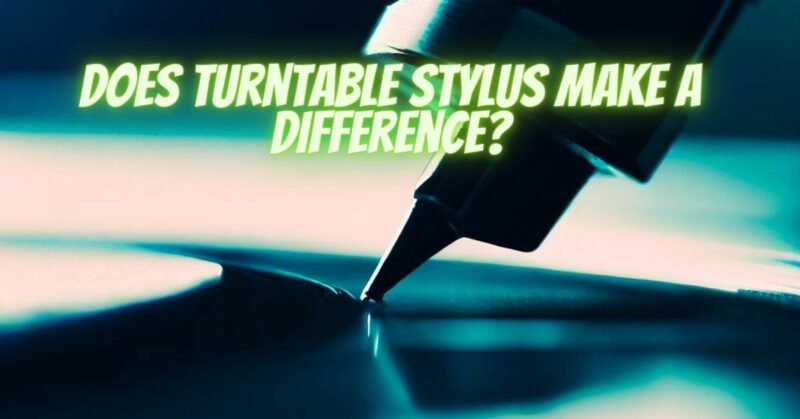In the realm of vinyl playback, the stylus—often referred to as the needle—is a seemingly small but immensely important component. This unassuming piece of equipment has a significant role in extracting the intricate musical information from the grooves of your vinyl records. But does the turntable stylus truly make a difference in the overall sound quality? In this article, we’ll explore the nuances of the stylus’s role and how it can profoundly influence the way you experience your vinyl collection.
The Stylus’s Role in Sound Reproduction
The stylus is the point of contact between your vinyl records and the turntable’s cartridge. Its primary function is to trace the grooves of the record, converting the analog physical modulations into electrical signals that your audio system amplifies and translates into sound. The design, shape, and material of the stylus have a direct impact on the way it interacts with the grooves and, consequently, the sound quality you hear.
- Stylus Shape: The shape of the stylus tip significantly affects its ability to navigate the grooves accurately. Different shapes, such as conical, elliptical, and microline, offer varying levels of tracking precision and surface contact with the record.
- Tracking Ability: A well-designed stylus tracks the record’s grooves consistently without causing excessive wear or mistracking. Accurate tracking ensures that the stylus reproduces the full range of frequencies present in the music.
- High-Frequency Detail: The stylus’s ability to read the intricate high-frequency details of the grooves impacts the clarity and richness of the music. A high-quality stylus preserves these details, contributing to a more immersive and engaging listening experience.
- Low-Frequency Response: A well-engineered stylus accurately captures the low-frequency vibrations in the grooves, reproducing the warmth and depth of bass frequencies. This contributes to a balanced and full-bodied sound.
- Record Preservation: An appropriate stylus reduces the wear on both the stylus itself and the vinyl records. A worn or poorly matched stylus can cause excessive groove wear, leading to a loss of sound quality and permanent damage to your records.
Making a Difference in Sound Quality
The impact of the turntable stylus on sound quality cannot be understated. Here’s how it can make a difference:
- Enhanced Detail and Clarity: A high-quality stylus with a well-matched shape can reveal nuances in the music that might otherwise go unnoticed. Delicate instrumental details, vocal inflections, and ambient sounds become more discernible.
- Accurate Frequency Response: A properly calibrated stylus accurately reproduces the full frequency spectrum, from the shimmering highs to the resonant lows, resulting in a balanced and authentic sound.
- Reduced Distortion: A well-tracked stylus minimizes distortion, ensuring that the sound you hear is faithful to the original recording.
- Preservation of Records: A quality stylus helps preserve your vinyl records by exerting minimal wear on the grooves, prolonging the lifespan of both the stylus and the records themselves.
The turntable stylus plays a pivotal role in determining the quality of sound you experience when listening to your vinyl records. Its shape, design, and tracking ability have a direct impact on the accuracy, detail, and balance of the audio reproduction. By investing in a high-quality stylus that matches your musical preferences and record collection, you can unlock the full potential of your vinyl playback. A well-engineered stylus not only enhances your appreciation of music but also contributes to the preservation of your cherished vinyl treasures, allowing you to savor the captivating world of analog sound for years to come.


